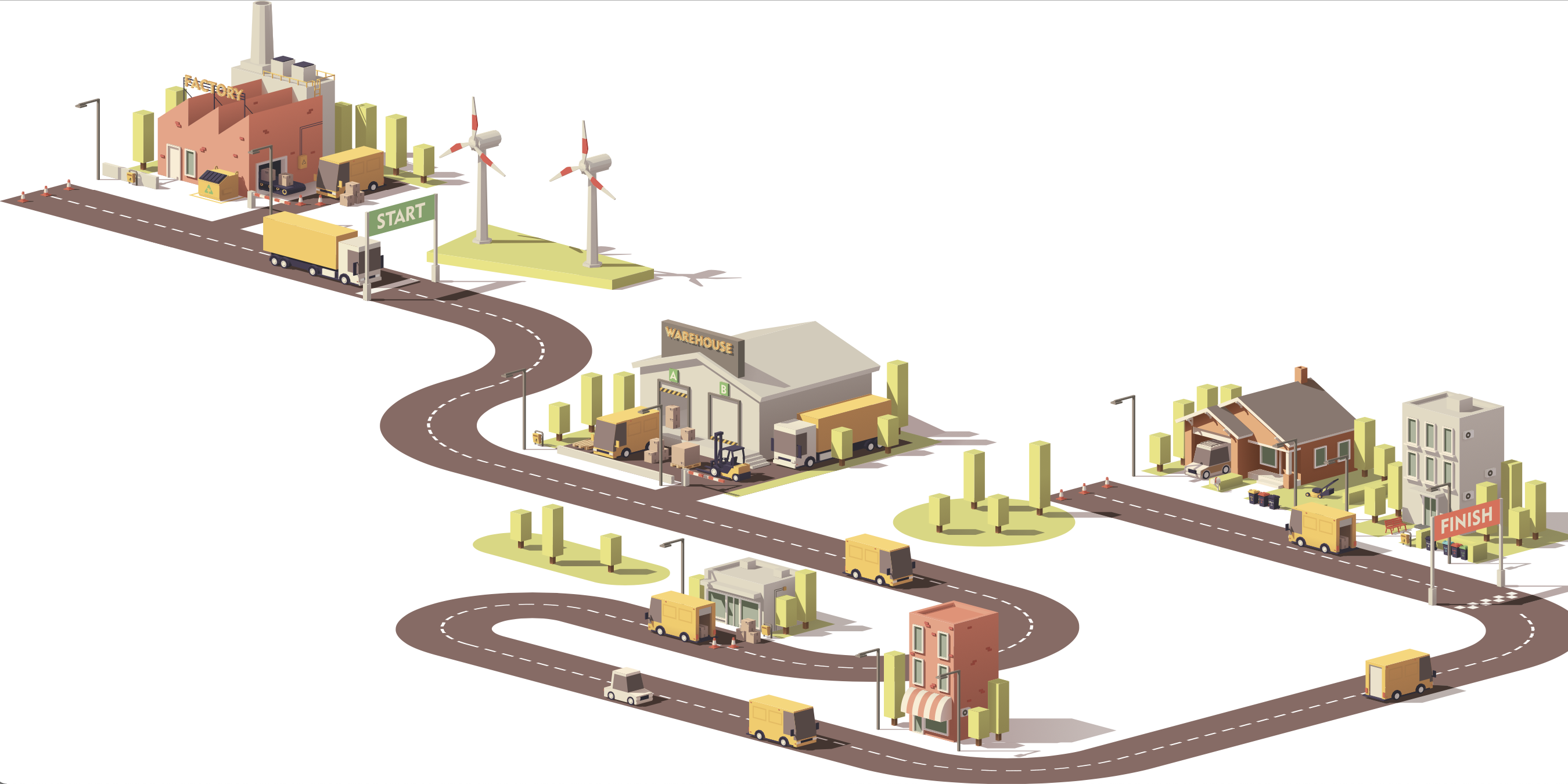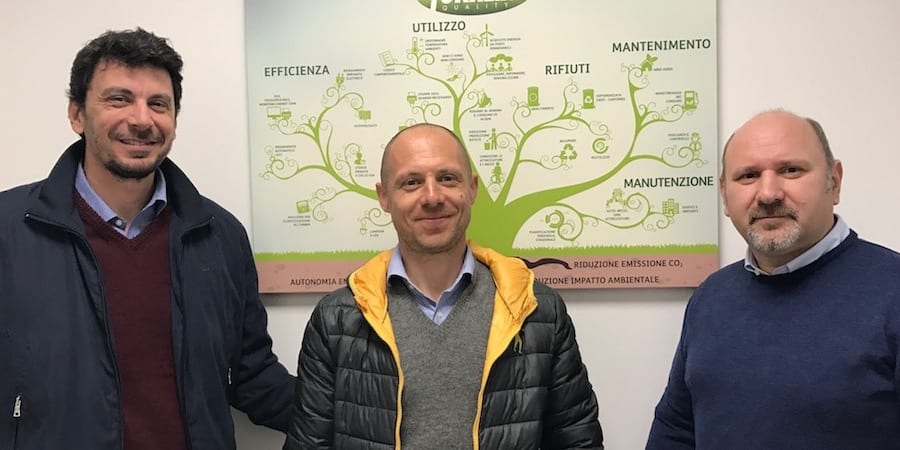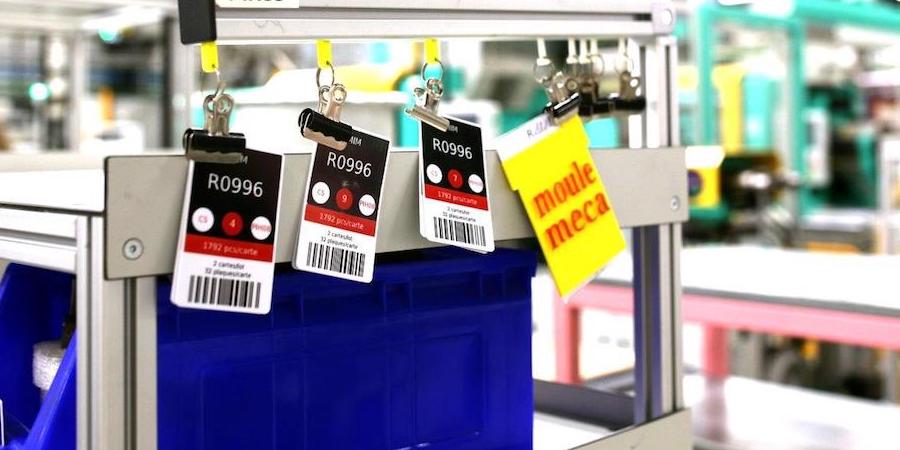
Overcoming a kanban system’s scalability problems with digitalization
CASE STUDY – Italian company El.Co. leveraged digitalization to overcome some key limitations of its manual kanban system while maintaining its pull system intact.
Words: Nicolò Zaffonato and Matteo Biagini
El.Co. Srl is an Italy-based company with over thirty years of experience in the industrial electrical automation sector. We have a strong lean culture, with kanban representing one of the pillars of our lean working system. A few years ago, we started to notice some limitations in our manual kanban system. In this article, we’ll share how we were able to successfully overcome them without distorting our pull system, simply by digitalizing what already worked.
FROM PUSH TO KANBAN EXCELLENCE
Like many traditional manufacturing companies, El. Co. was initially operating a traditional, push-based production system, relying on centralized planning and forecast-based scheduling. When I (Nicolò) joined the company, I understood we needed a change and advocated for the introduction of Lean Thinking. As we did so, we gradually moved away from a push logic, embracing pull principles and implementing tools such as kanban instead.
This shift put flow at the heart of our operations, making them more responsive. It radically improved material flow, reduced overproduction, and increased visibility across the shopfloor. It also fostered a culture of continuous improvement, where every process is examined through the lens of value creation. Implementing kanban across multiple lines not only streamlined our operations but also laid the groundwork for further improvement work, most notably, a digital transformation.
SCALABILITY LIMITS TO THE APPLICATION OF KANBAN METHOD
For years, we managed up to 16 production lines with manual kanban, leveraging our deep-rooted lean culture and solid internal training. But despite our maturity in the use of this tool, we struggled to maintain the system.
Every two months, a colleague and I had to spend three full days just to update parameters, check if some part numbers needed a new dimensioning, reprint kanban cards, and apply them to kanban bins across the shopfloor. It was a huge effort that wasn’t scalable, and it certainly wasn’t lean.
As a result, we were forced to carefully select which items to manage through kanban, reducing the total of part numbers handled by the system to avoid overloading the team responsible for kanban maintenance. These compromises were necessary at the time but ran counter to our broader goals of lean scalability and flow.
We recognized we were at a tipping point and decided to check if electronic kanban could solve the problem.
DIGITALIZING KANBAN SYSTEM WITH ELECTRONIC KANBAN SOFTWARE
Without having to overhaul our existing processes, we implemented an electronic kanban system, through the adoption of an electronic kanban software. We kept the same pull logic and structure we had before, but were able to optimize two crucial kanban activities:
- Automatic kanban sizing: the software collects all relevant consumption data, calculates optimal kanban quantities per item, and suggests when to add or remove kanban cards.
- Simplified card maintenance: instead of having to redesign templates, reprint batches, or replace entire sets of cards, the electronic kanban system uses disposable kanban cards, automatically generated with updated parameters and printable.
A KANBAN SYSTEM WITHOUT SCALABILITY PROBLEMS
Thanks to this transition, at El.Co. we significantly reduced the time and effort needed to maintain the kanban system, freeing up our people’s time so we can focus on continuous improvement rather than system upkeep.
The shift to electronic kanban didn’t replace our lean foundation; it solidified it. We were finally able to manage through kanban all the part numbers and lines we wanted, with no limits.
We were able to overcome other constraints, too. For example, the electronic kanban system gave us full visibility over all existing kanban cards and their status, which became a strategic tool that enables data-driven decisions when we need to build a VSM for individual components or an entire department.
Should scalability needs arise in the future, we will be able to connect our electronic kanban system with advanced technologies such as ERP systems, RFID portals, AGVs, and automated storage systems. This integration would help us support a more connected and responsive production environment. And should we decide to extend the benefits of pull flow beyond our internal operations, we could also integrate the system with external suppliers, partners, and customers, enabling seamless collaboration across the entire supply chain.
For us lean folks within El. Co., this system meant solving a logistical issue (digitalizing kanban maintenance) while also allowing the company to adapt and scale lean beyond our physical constraints. In other words, it does the heavy lifting giving us more time to focus on our lean work of enabling flow in our process, reducing waste, and developing a culture of continuous improvement.
You can read more about this case study at this page.
To discover more about electronic kanban, download this free guide.
THE AUTHORS


Read more


FEATURE – Improving supplier quality and reduce defects was an important part of Toyota Industries Corporation’s (TICO) Dantotsu activities since the very beginning. In this article, the author visits two parts suppliers.


FEATURE – The many benefits of 5S are well known, but few people realize the positive impact the technique can have on our environmental performance, says our lean and green correspondent after visiting Tokheim Italia.


CASE STUDY – The Hospital de Bellvitge in Barcelona is relying heavily on hoshin and Kata to create a working environment based on collaboration and joint problem solving.


FEATURE – In the face of uncertainty, when it’s hard to see the road ahead, we can still make things better day after day by embracing kaizen – until we are out of the woods.
Read more


FEATURE – This article explores the benefits of an electronic kanban and explains how it enables a truly lean supply chain.


FEATURE – Using an effective example from every-day life, the author discusses why Kanban is the gateway to Lean Thinking – and not just a tool.


THE TOOLS CORNER – In this new series, we go back to basics, offering a guide on how to implement some of the most important lean tools and explaining why they are so clever. First up, Kanban.


FEATURE – The author explores the relationship between kanban and improvement and discusses how using it can impact our lean transformation.

